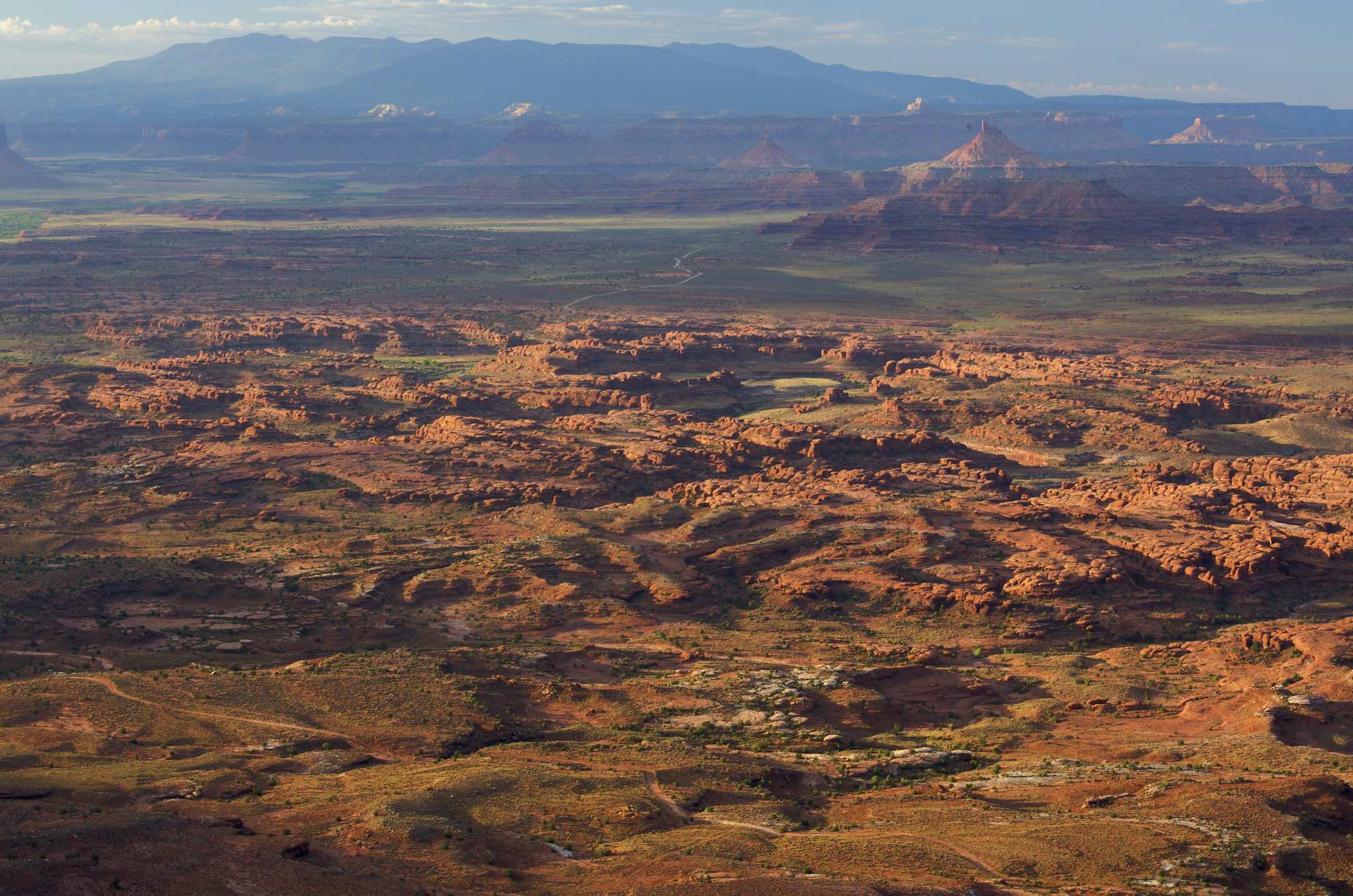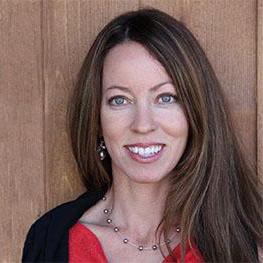The Mojave Desert in southwest Utah is desolate and dry, until Highway 18 takes you across a canyon that is overflowing with lush greenery, sheer rock walls, and gin-clear springs. Locals have known about this unique oasis—dubbed Crawdad Canyon—for many years. As long ago as 1920, travelers on the Old Spanish Trail could pay to swim and relax here, and the family of homesteader “Gramps” Cottam ran it as a low-key recreational area until 1995.
But it was only in the past decade that Crawdad Canyon acquired its unique new identity: a private climbing resort, among the first in a wave of eco-sensitive, specialty vacation destinations. In addition to a restored pool and other amenities, the canyon now features 200 bolted climbing routes ranging from 5.6 (a couple of pull-ups and a few flights of stairs) to 5.13 (two finger pull-ups, ten flights of stairs, several sit-ups, and the splits) winding their way along the 80-foot basalt walls. There are belaying benches, manicured paths, and brass plaques at the base of each climb with the name and rating.
What do you get when you cross a Willie Nelson look-alike with the personality of Richard Branson?
Answer: Jim Bosse
A local non-profit climbing group, the Southern Utah Climber’s Coalition, manages the climbing area, collecting the $8-a-day climbing fee, maintaining the trails, bolts, and bridges, and offering guide services. In return, the group gets 20 percent of revenues and a few months a year of exclusive access. “The unexpected appearance of so much in the midst of so little creates an instant desire to explore and the lure of relief is irresistible,” said rock climber and author Todd Goss, who my family met in the summer of 2008 after succumbing to the allure of Crawdad Canyon.
The climbing was outstanding, but even more exceptional is the story of the man whose vision inspired this first-of-its-kind private climbing park.
A Vision for a Canyon
What do you get when you cross a Willie Nelson look-alike with the personality of Richard Branson? Answer: Jim Bosse. After becoming bored with his day job as a developer, consulting for Hollywood films on the side, and his hobby of horseshoeing, Bosse escaped California to find something special in a canyon hidden in southern Utah. The special came as a combo platter of rock climbing, a natural springs pool, camping, crawdad fishing, wild turkeys, and french fries—all within a two-mile radius. This combo is now attracting guests from all over the world, and the campsites are booked a year in advance for select weekends.
If climbing is not your cup of tea, there are other types of recreation parks popping up. For example, Texas rancher, Trey Hill, now supports himself full time with a bike resort that offers 40 miles of trails, camping facilities, trailer hookups, and a restaurant. Hill hosts about 150 paying riders every Saturday.
Long before Bosse, “Gramps” Cottam acquired the land and water rights to the Santa Clara River and adjacent natural spring via the Homestead Act. He started charging travelers 15 cents for a dip in the pool and another quarter if they wanted a wagon ride up the other side of the steep canyon. The pool and property stayed with the Cottam family until 1995, when Bosse came along and convinced the family that he had the resources to revive the property without building a conference center. According to Morris Atwell, friend of Bosse and the current manager of Crawdad Canyon, “Jim saw the remains of a worn down pool and overgrown canyon and immediately had a vision of a beautiful recreation resort.”
Within a year of purchasing the property, Bosse turned the small, dilapidated pool into a flourishing oasis. He expanded the swimming area, built decks and bridges over the river, refurbished the restaurant, groomed paths through the dense cottonwoods filling the canyon floor, and established camping areas.
During construction of the pool and campsites, Bosse couldn’t help but notice the hoards of climbers literally hanging around southern Utah. He had just purchased 45 acres of a rocky canyon. Bosse put two and two together and his entrepreneurial spirit perked up once again.
On one of Bosse’s trips to a local lumber store, he saw a large climbing structure in the parking lot. He dropped his shopping list and ran over to see climber extraordinaire Todd Goss doing a demo. Goss recalls a “hairy, flannel shirt redneck” running up to him to chat before he could even get his harness off. Bosse raved about the “black rock” in his canyon. Goss tried to ignore him, but Bosse was persistent and before he knew it he was in Jim’s truck “heading out to Crawdad.”
Sure enough, there was “gold in them thar hills”—Bosse’s black rock turned out to be Basalt, with plenty of pockets and cracks for climbing, plus shade and a stream (valuable commodities in the desert). Bosse wasn’t one to dabble around and he quickly recruited Goss, Michal Nadd, and a few other folks from the Southern Utah Climbers Coalition to start clearing the canyon and preparing the routes.
The crew was committed to not only creating the first private climbing park, but also preserving one of the most pristine climbing areas in the United States. Nadd recalls the season of sleeping on a futon in the women’s restroom as being one of his best. And Goss, who lived in a broken down house on the property while setting routes, remembers being inspired by seeing “a millionaire [Bosse] wash his hair in an old trailer house sink because he wanted to live on the property during the renovation.”
If it’s water you’re looking for, Bear Paw Outdoor Adventure Resort for Canoe and Kayaking, located in Wisconsin’s Wolf River territory, is designed for the outdoor enthusiast.
Although the team was dedicated to creating Crawdad Canyon Climbing Area, they made sure they had fun in the process. Goss recalls the day Bosse collapsed in his lawn chair to enjoy a margarita after hours of clearing debris. He watched a few climbers finish bolting a new route then jumped up and declared (after his second drink) that it was time for him to try climbing. Sporting tennis shoes, jeans, and a full belly, Bosse pulled off the first ascent of “Chef Sherry.” Upon completion, he bellowed, “I am the best climber in the world—I have now done it all!”
A Sad Turn, But a Bright Future
Unfortunately, Bosse’s love affair with Crawdad Canyon may have contributed to his ill-timed death in 1998. After a hard day’s work in the canyon, Bosse, who had a heart condition, died of a heart attack. He knew this was a possibility, but his passion drove him to live life to the fullest and embrace the entrepreneurial spirit of the West.
Although this epic tale includes sorrow, Bosse’s memory and inspiration live on. His goal was to create a place where lives could be enriched and people could become aware of the natural environment— all while earning a living from revenue generated from the outdoor mecca (Bosse recouped his initial investment of $350,000 in two years). His objective has been accomplished at Crawdad Canyon and is now being replicated elsewhere.
Bosse’s vision has inspired other “enviropreneurs” to invest in private recreation resorts. The Johnson family learned of Crawdad Canyon and started developing a climbing area at their Horseshoe Canyon Ranch in the Ozarks of Northwest Arkansas. With the constant stream of pro climbers visiting Horseshoe, climbing has attracted the spotlight and guests are coming from far and wide for the chance to climb the coveted sandstone. Jason Roy, Adventure Activities Director and Head Climbing Guide, says, “The draw to Horseshoe Canyon Ranch is the close proximity to camping and safely bolted moderates [routes]. It’s like luxury climbing … and the climbs are so diverse from slabs, to cracks, to steep overhangs, and massive arêtes.” It has much to offer in addition to climbing. Horseshoe Canyon’s guest ranch packages include horseback riding, canoeing, hiking, shooting, disc golf, cookouts, and various lodging accommodations such as tepee camping.
If climbing is not your cup of tea, there are other types of recreation parks popping up. For example, Texas rancher, Trey Hill, now supports himself full time with a bike resort that offers 40 miles of trails, camping facilities, trailer hookups, and a restaurant. Hill hosts about 150 paying riders every Saturday.
The pool and property stayed with the Cottam family until 1995, when Bosse came along and convinced the family that he had the resources to revive the property without building a conference center.
If it’s water you’re looking for, Bear Paw Outdoor Adventure Resort for Canoe and Kayaking, located in Wisconsin’s Wolf River territory, is designed for the outdoor enthusiast. Whether it is a quiet paddle across a lake to see an eagle’s nest, or the thrill of navigating the rushing whitewater in a canoe or kayak, Bear Paw has a staff of professional kayakers standing by to help. Other activities include fly-fishing, yoga, and, in the winter, skiing and snowshoeing.
While much of nature-rich land is being developed in the form of subdivisions and strip malls, Bosse and other environmental entrepreneurs are proving that there is a market among outdoor enthusiasts for recreational opportunities in natural settings.




